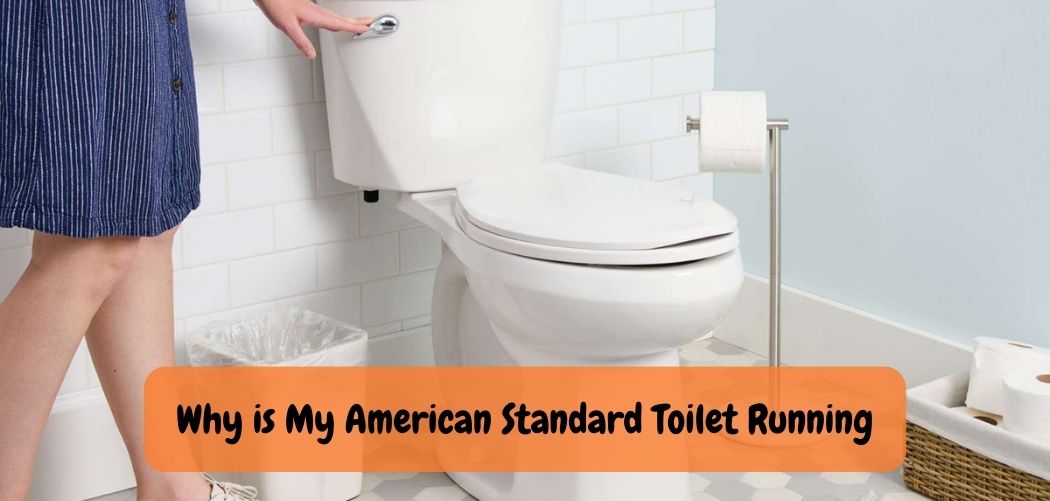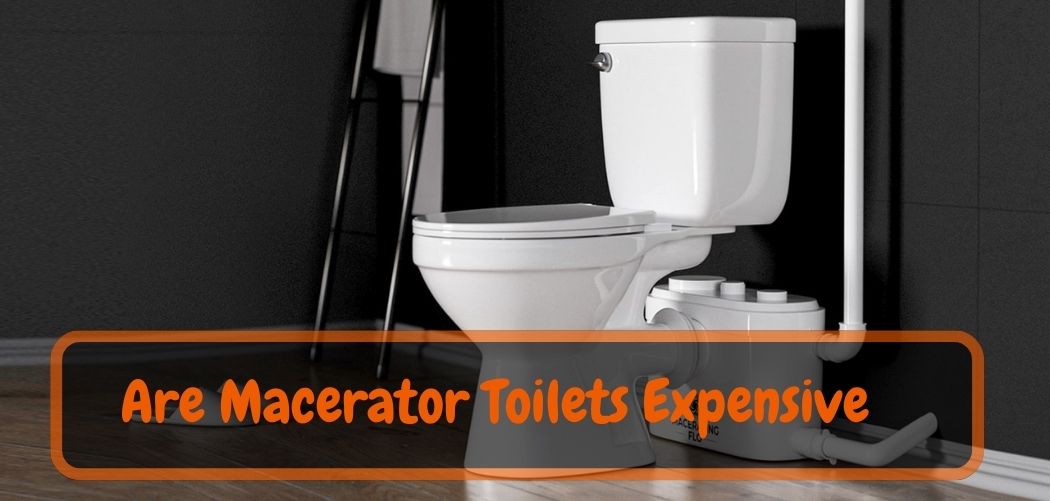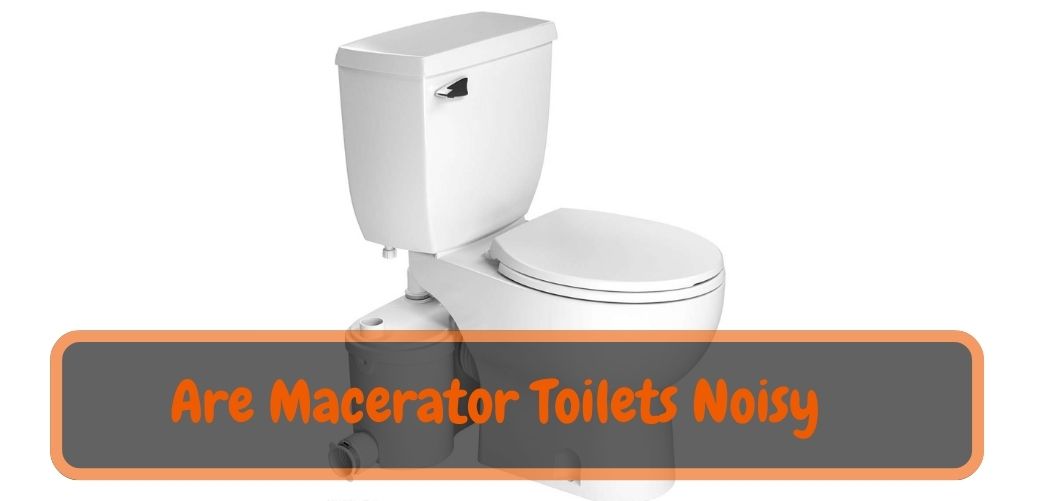Are you hearing the incessant sound of water running in your bathroom? If so, you might be wondering, “Why is my American Standard toilet running?”
A running toilet is not just annoying; it can also lead to wasted water and higher utility bills.
In this blog post, we will explore the common causes of a running American Standard toilet and provide you with troubleshooting steps and solutions to put an end to this frustrating issue.
Understanding the Problem
Before we dive into the solutions, it’s essential to understand the problem. A running toilet can manifest in various ways, from a constant trickle of water to intermittent running. Identifying the cause is crucial to finding the right fix. Let’s explore the most common causes of a running American Standard toilet.
Common Causes of a Running American Standard Toilet
- 01. Flapper or Seal Issues: One of the most frequent culprits behind a running toilet is a faulty flapper or seal. Over time, these components can deteriorate or become misaligned, allowing water to leak from the tank to the bowl.
- 02. Float Problems: If the float is not adjusted correctly or damaged, it can lead to the toilet not stopping the filling process at the right water level.
- 03. Fill Valve Malfunction: The fill valve, responsible for refilling the tank after each flush, may develop problems like clogs or wear and tear.
- 04. Chain or Lever Problems: Issues with the chain or lever connecting the flush handle to the flapper can prevent the flapper from sealing correctly.
Troubleshooting Steps
Is your American Standard toilet running continuously, causing frustration and potentially higher water bills? Here are the steps to troubleshoot and stop it from running:
01: Check the Flapper and Seal
- Turn off the water supply to the toilet: Locate the water shut-off valve, usually located near the base of the toilet, and turn it clockwise until it’s fully closed. This step ensures that no more water flows into the tank during your inspection.
- Lift the tank lid and inspect the flapper and seal: Carefully lift the lid of your toilet tank. Inside, you’ll find the flapper (a rubber or plastic valve) and the seal around the flush valve opening. Examine these components closely.
- Ensure they are in good condition, sealing the flush valve opening properly: Look for any signs of damage, wear, or misalignment. The flapper should create a watertight seal when closed. If you notice any issues, such as cracks or warping, it’s time for a replacement.
- Replace them if necessary: If the flapper or seal is damaged or not sealing correctly, it’s crucial to replace them. You can find compatible replacement parts at your local hardware store or online.
02: Adjusting the Float for Optimal Performance
- If the float is set too high, it can lead to a continuous flow of water into the overflow tube: The float controls the water level in the tank. If it’s set too high, the tank will constantly try to fill, leading to a running toilet.
- Adjust the float to the correct water level: Locate the float arm or ballcock assembly. Depending on your toilet model, you may need to turn an adjustment screw or bend the float arm to achieve the desired water level. Follow the manufacturer’s instructions for your specific toilet model.
03: Inspect and Clean the Fill Valve
- Remove any debris or mineral buildup from the fill valve: The fill valve is responsible for refilling the tank after each flush. Over time, it can become clogged with sediment or mineral deposits, affecting its performance.
- Ensure it opens and closes smoothly: Manually operate the fill valve to ensure it moves freely. If it feels stiff or doesn’t open and close smoothly, it may need cleaning or replacement.
04: Fixing the Chain or Lever
- Check for any chain or lever issues that may prevent the flapper from sealing correctly: Inspect the chain that connects the flush handle to the flapper. Ensure it has proper tension and is not tangled or caught on any other parts. Additionally, check the flush lever for any signs of damage or misalignment.
- Adjust or replace these components if needed: If you find issues with the chain or lever, make the necessary adjustments or consider replacing them. A properly functioning chain and lever are essential for the flapper to seal effectively.
How to stop a running toilet in seconds?
While the steps mentioned above are more comprehensive and address the root causes of a running toilet, there are quick, temporary fixes that can stop a running toilet in seconds. If you’re in a pinch and need immediate relief, follow these steps:
- Quickly lift the tank lid: Carefully lift the lid of your toilet tank.
- Jiggle the flush handle: Gently jiggle or tap the flush handle. Sometimes, this can reseat the flapper and temporarily stop the running water.
- Adjust the flapper manually: If the flapper isn’t sealing correctly, you can manually press it down to stop the water flow. However, keep in mind that this is a temporary solution, and addressing the root cause is necessary for a permanent fix.
Remember, while these quick fixes can provide temporary relief, it's essential to follow the troubleshooting steps mentioned earlier to address the underlying issue and prevent future running toilet problems.
Why does my American Standard toilet run intermittently: Causes and Solutions
If your American Standard toilet runs intermittently—meaning it starts and stops filling or flushing on its own—this issue can be both annoying and wasteful. Understanding the causes behind this intermittent running and knowing how to resolve them can help you maintain a properly functioning toilet. Let’s explore the possible causes and solutions:
1. Minor Leaks in the Flapper:
- One common reason for intermittent running is a minor leak in the flapper. Over time, the flapper may develop small cracks or wear, allowing water to slowly seep into the bowl.
- Solution: To address this issue, follow the steps below:
- Turn off the water supply to the toilet.
- Lift the tank lid and inspect the flapper for signs of damage or deterioration.
- If you find any issues, replace the flapper with a new one to ensure a proper seal.
2. Malfunctioning Fill Valve:
- A malfunctioning fill valve can also lead to intermittent running. If the fill valve fails to shut off properly, it may allow water to continuously flow into the tank, causing intermittent filling.
- Solution: To resolve this problem, perform the following steps:
- Turn off the water supply to the toilet.
- Inspect the fill valve for any debris or mineral buildup that may hinder its operation.
- Clean the fill valve to ensure it opens and closes smoothly. If cleaning doesn’t help, you may need to replace the fill valve.
3. Water Pressure Fluctuations:
- Intermittent running can sometimes result from water pressure fluctuations in your plumbing system. Rapid changes in water pressure can cause the toilet’s fill valve to open and close unexpectedly.
- Solution: While you can’t control water pressure fluctuations in your plumbing system, you can install a pressure regulator or expansion tank in your home’s water supply line to stabilize water pressure. Consult with a plumber for professional advice on addressing this issue.
4. Worn Toilet Parts:
- Over time, various parts of your toilet, such as the flush valve, may wear out, leading to intermittent running.
- Solution: To address this, you may need to replace worn-out components or consider a complete toilet overhaul if your toilet is old and multiple parts are failing.
5. Incorrect Flapper Adjustment:
- If the flapper is not properly adjusted or seated, it may intermittently allow water to leak into the bowl.
- Solution: To resolve this, follow these steps:
- Turn off the water supply to the toilet.
- Adjust the flapper’s chain or position to ensure it closes fully and forms a watertight seal when not in use.
6. Corroded or Faulty Flush Handle:
- A corroded or faulty flush handle can sometimes lead to intermittent running if it doesn’t activate the flush mechanism correctly.
- Solution: Inspect the flush handle and replace it if it’s corroded or malfunctioning.
Regular maintenance and prompt attention to any issues can help prevent intermittent running in your American Standard toilet. If you encounter persistent problems or are unsure about how to address them, it's advisable to consult a professional plumber for a thorough inspection and necessary repairs.
American Standard Dual Flush Toilets
American Standard dual flush toilets are designed to be more water-efficient by offering two flush options: a lower-volume flush for liquid waste and a higher-volume flush for solid waste. If you have one of these toilets, it’s essential to understand their unique design and how to troubleshoot and maintain them properly.
Unique Design Considerations:
- Dual Flush Mechanism: American Standard dual flush toilets have a dual flush button or lever, typically located on the top of the tank. Pressing one button releases a smaller amount of water, while the other button releases a larger volume of water.
- Flapper or Flush Valve Design: These toilets often use a special flapper or flush valve design to control the water release for the dual flush system. This design may differ from traditional toilets.
- Water-Saving Benefits: Dual flush toilets are known for their water-saving benefits, as they allow you to choose the appropriate flush volume for the type of waste, reducing water consumption.
Troubleshooting Tips for American Standard Dual Flush Toilets:
If you encounter issues with your American Standard dual flush toilet, such as continuous running, incomplete flushes, or other problems, here are some general troubleshooting tips:
- Check the Dual Flush Buttons or Lever: Ensure that the dual flush buttons or lever are functioning correctly. If they are stuck or not returning to their neutral position after flushing, it can cause issues. Clean or lubricate them as needed.
- Inspect the Dual Flush Valve: Examine the dual flush valve (the mechanism inside the tank that controls the water flow) for any debris, mineral deposits, or wear and tear. Clean or replace it if necessary.
- Adjust the Flush Buttons or Lever: If you notice that one flush button or lever is significantly harder to press than the other, it may indicate an imbalance in the flush mechanism. Adjust the mechanism as needed to ensure both flush options work smoothly.
- Check for Leaks: Inspect the toilet for any visible leaks around the base or tank. Even small leaks can lead to continuous running or water wastage.
- Refer to Your User Manual: American Standard provides user manuals with their toilets that include specific instructions and diagrams for troubleshooting. If you’re unsure about any aspect of your dual flush toilet’s operation or maintenance, consult your user manual for guidance.
Preventative Maintenance
To keep your American Standard dual flush toilet in optimal condition and prevent running toilet problems, consider the following maintenance tips:
- Regularly Inspect Toilet Components: Periodically check the condition of the flush buttons, flapper or flush valve, fill valve, and the internal components of the tank. Look for signs of wear, corrosion, or damage.
- Clean the Fill Valve and Flush Valve: Over time, mineral deposits and debris can accumulate in the fill valve and flush valve, affecting their performance. Clean these components as needed to ensure they open and close smoothly.
- Replace Components as Needed: If you notice any components showing signs of wear or damage during your inspections, replace them promptly. It’s crucial to use compatible replacement parts designed for your specific American Standard dual flush toilet model.
By understanding the unique design of your American Standard dual flush toilet and following these maintenance and troubleshooting tips, you can enjoy efficient and trouble-free operation while conserving water.
American Standard Toilet Troubleshooting
American Standard 4000 Toilet Keeps Running, American Standard Toilet Won’t Stop Filling, American Standard Toilet Float Not Working, American Standard Toilet Float Adjustment, American Standard Toilet Repair Kit, American Standard Toilet 4215A Keeps Running
If you encounter any of these specific issues, refer to our step-by-step guidance in separate articles dedicated to each problem. We’ve got you covered.
Is a Running Toilet a Serious Problem?
Ignoring a running toilet can lead to increased water bills and potential damage to your toilet’s components. Taking prompt action to address the issue is essential to avoid these consequences.
Conclusion
In the world of plumbing inconveniences, a running toilet can be one of the most persistent annoyances. However, armed with knowledge and a few simple tools, you can tackle this issue head-on and restore your American Standard toilet to its quiet, efficient glory.
We’ve covered the common causes, provided step-by-step troubleshooting guidance, and even delved into the nuances of American Standard dual flush toilets. With these insights at your disposal, you’re well-prepared to address any running toilet situation that comes your way.
Remember, timely action not only saves you from the irritation of a perpetually running toilet but also helps conserve water and reduces your utility bills. Don’t hesitate to perform regular maintenance, stay vigilant for wear and tear, and make necessary adjustments or replacements as needed.
Additional Resources
For more information and video tutorials, visit American Standard’s official website or reach out to their customer support for personalized assistance.
Also read our others post on American Standard’s Toilet
- Uncovering the Truth: Are American Standard Toilets?
- Unveiling the Mystery: Who Makes American Standard Toilet?
- Save Money: How Long American Standard Toilets Last
- Discover the Secret Process of American Standard Toilet Manufacturing
- The Ultimate Guide to the American Standard Toilet Name
Final Thoughts
Thank you for reading our guide on troubleshooting a running American Standard toilet. We hope this information helps you put an end to that pesky water wastage and annoying noise. If you have any questions or need further assistance, please don’t hesitate to ask.










